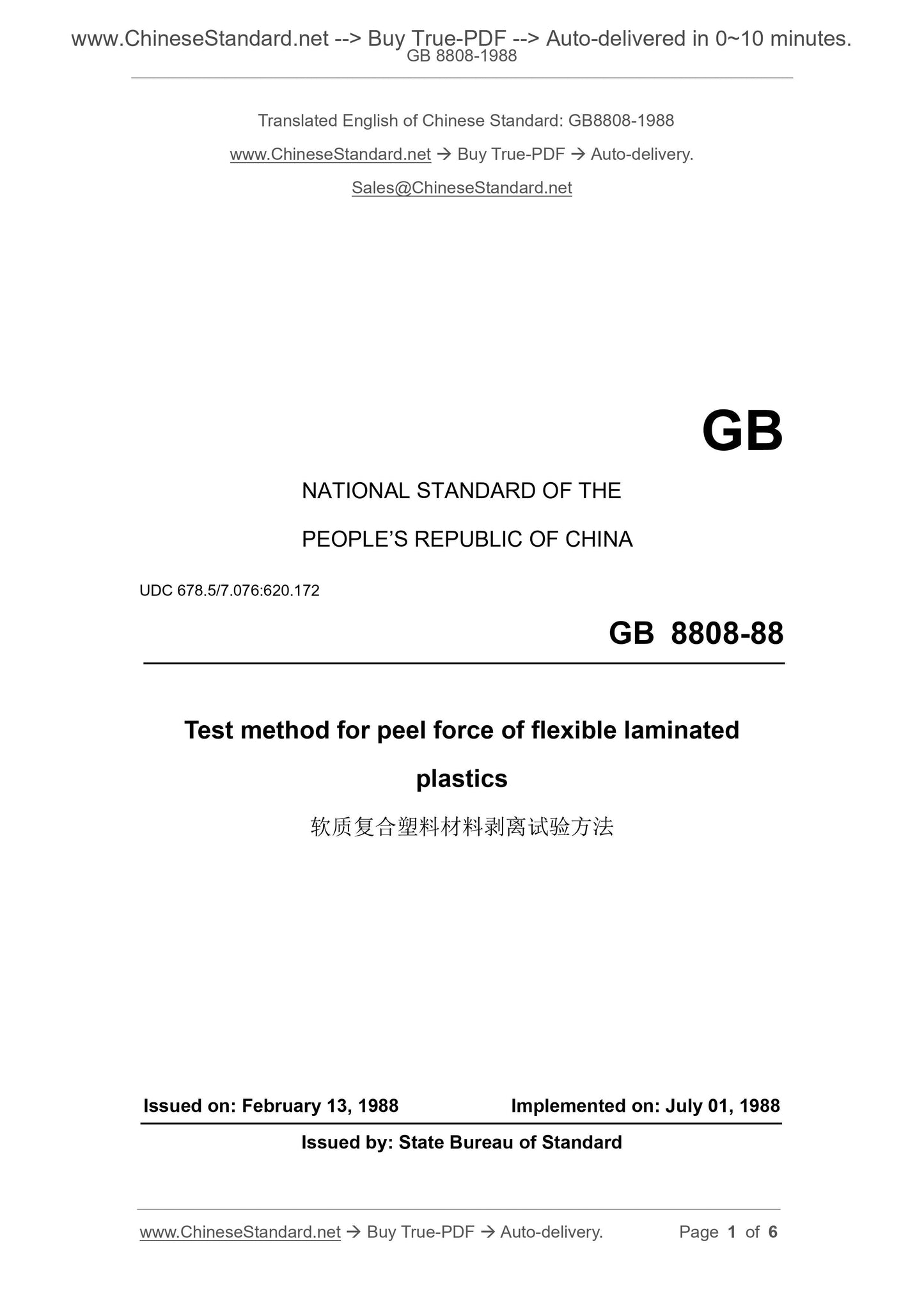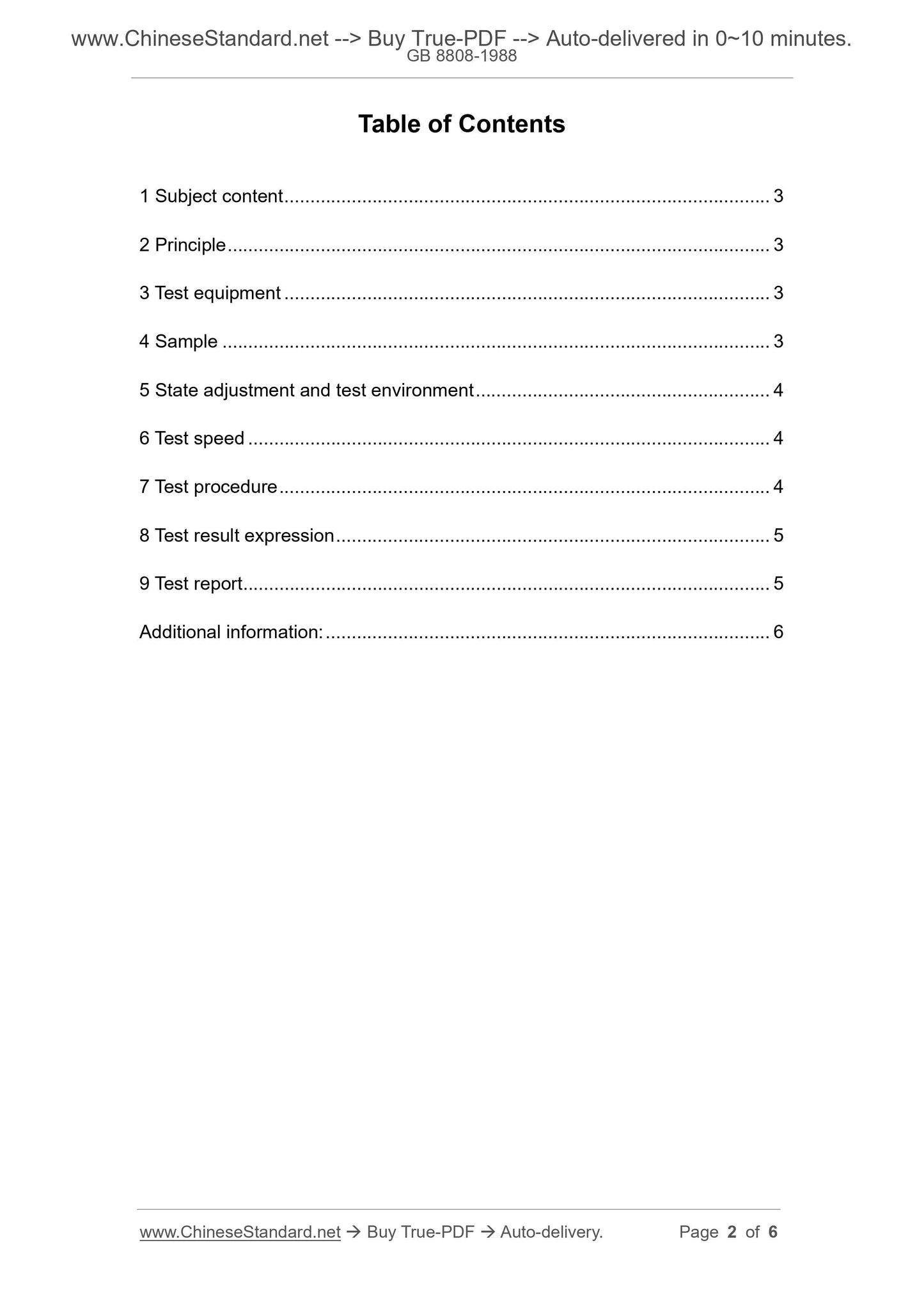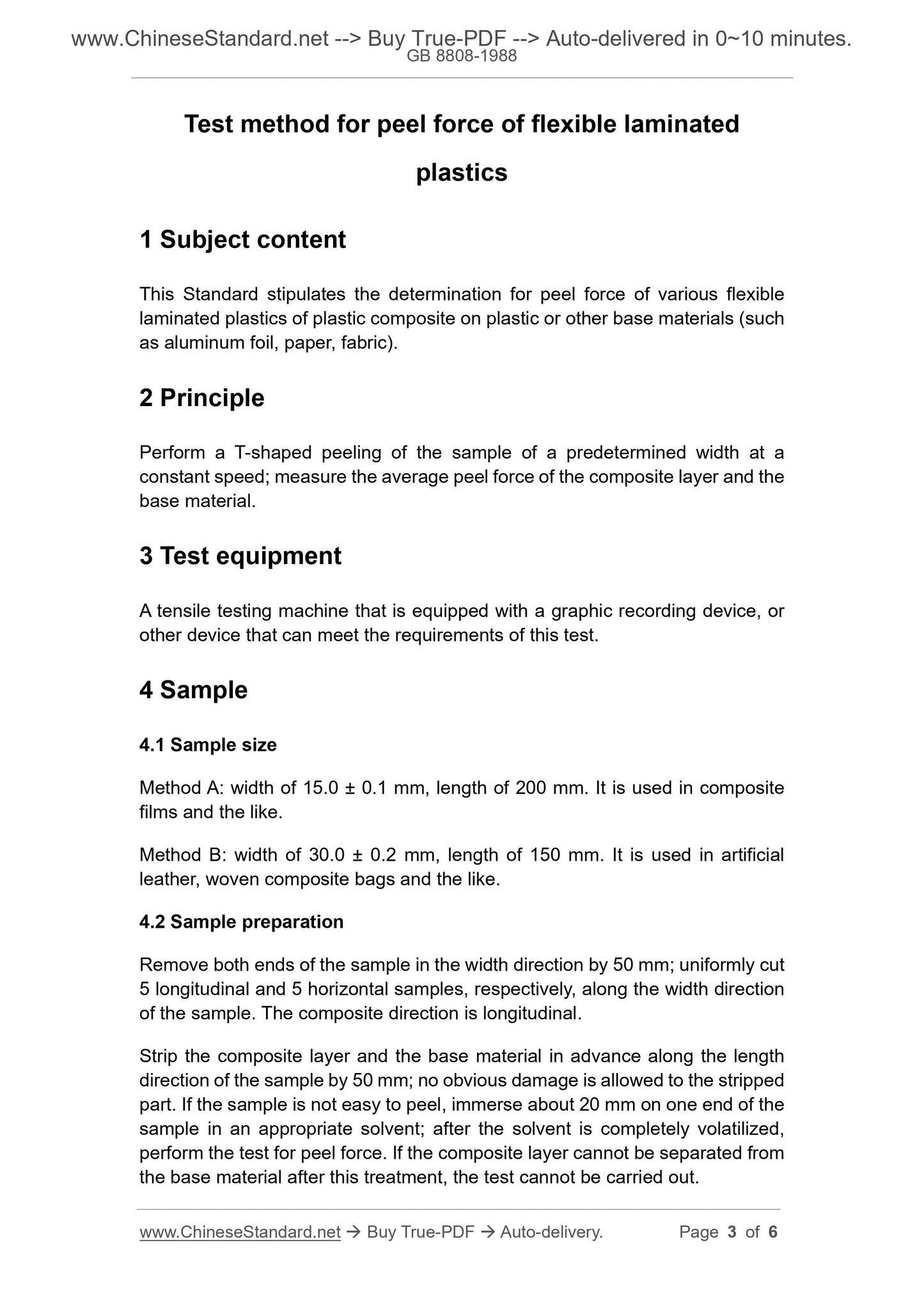1
/
of
3
www.ChineseStandard.us -- Field Test Asia Pte. Ltd.
GB/T 8808-1988 English PDF (GB/T8808-1988)
GB/T 8808-1988 English PDF (GB/T8808-1988)
Regular price
$110.00
Regular price
Sale price
$110.00
Unit price
/
per
Shipping calculated at checkout.
Couldn't load pickup availability
GB/T 8808-1988: Test method for peel force of flexible laminated plastics
Delivery: 9 seconds. Download (and Email) true-PDF + Invoice.Get Quotation: Click GB/T 8808-1988 (Self-service in 1-minute)
Newer / historical versions: GB/T 8808-1988
Preview True-PDF
Scope
This Standard stipulates the determination for peel force of various flexiblelaminated plastics of plastic composite on plastic or other base materials (such
as aluminum foil, paper, fabric).
Basic Data
| Standard ID | GB/T 8808-1988 (GB/T8808-1988) |
| Description (Translated English) | Test method for peel force of flexible laminated plastics |
| Sector / Industry | National Standard (Recommended) |
| Classification of Chinese Standard | Y20 |
| Classification of International Standard | 83.08 |
| Word Count Estimation | 3,357 |
| Date of Issue | 2/13/1988 |
| Date of Implementation | 7/1/1988 |
| Adopted Standard | DIN 53357-1982, NEQ |
| Summary | This standard specifies the determination of a variety of soft composite plastic material peel strength plastic composite plastic or other substrates (such as aluminum foil, paper, fabric, etc.) on. |
Share





